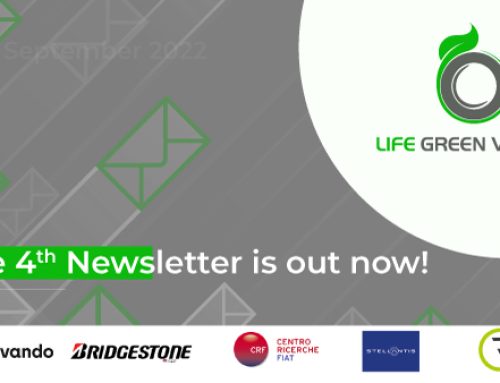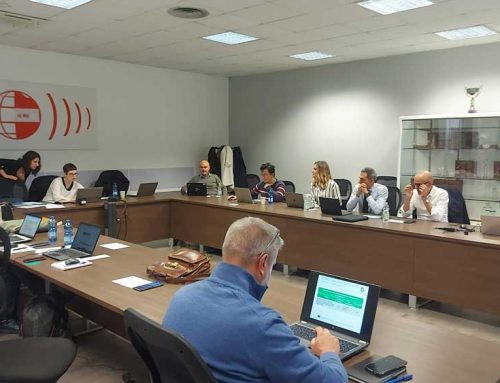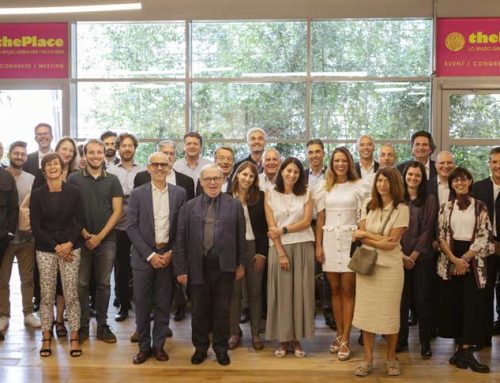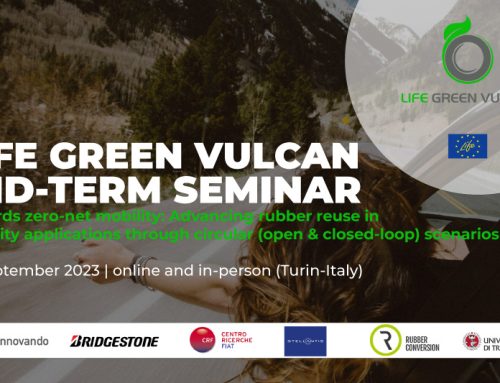Rubber Conversion’s CEO, Giuseppe Magistrale, shares in an interview his view of regulatory and market aspects connected with tyre retreading.
Paraphrasing the words of Stefano Carloni, President of AIRP – Italian Tyre Retreaders Association:
The circular economy is no longer just a fad or a refrain on everyone’s lips, but is the solution needed to reverse the catastrophic course of climate change
Tyre retreading plays a major role in this context, indeed it represents the noblest part of it because it consists in reusing the product itself.
Giuseppe Magistrale has spent more than 20 years developing products and technologies for the aerospace, tyre and various industries. Today he is Chief Operation Officer at Rubber Conversion.
What is the impact of the retreaded tyre on the Carbon Footprint?
Tyres have a strong vocation for the circular economy, so much so that they represent an ante litteram exemplary case of it, because the practice of retreading has existed for 80 years. Today this translates not only into economic advantages for the user but also into enormous environmental benefits.
Vittorio Marangoni, President of the leading Italian retreading company, emphasized, numbers in hand, how the retreaded tyre can reduce the carbon footprint with savings of 70% in raw materials, 65% in energy, 95% in CO2, 29% in soil consumption, 21% in harmful emissions and 19% in water consumption.
Reconstruction favours local supply chains, which deglobalise the economy, reducing international dependencies and the impact of transport. According to AIRP President Stefano Carloni, however, a distinction must be made: not all tyres are suitable for retreading. If we take a low-cost tyre, we see that at the end of its first life cycle it will almost certainly be impossible to retread it. On the contrary, a premium tyre, after the original tread has worn out, is in most cases suitable for retreading, to cope with another cycle of use (and sometimes two more). This is where the concept of ecodesign, or durable product design, comes in: the tyre must be designed upstream with the objective of being able to have more lives.
What are the market trends in the tyre retreading sector?
With this scenario, one would expect a strongly positive trend in tyre retreading. In fact, during 2021, retreaded tyre production volumes in Italy returned almost to the pre-pandemic level of 2019. This figure can be read in a twofold perspective: when compared to the vertical collapse that occurred in 2020, it is certainly a positive result, but when juxtaposed against the scenario of sharply rising new tyre prices, it can also appear somewhat disappointing.
CAM, End of Waste, Simplification Decree: what is the role of regulations in this market?
The Director General for the Circular Economy of the Ministry of the Environment, illustrated the new European directives on the circular economy, recently acknowledged by the Italian government, and then spoke specifically about the valorisation possibilities that can also concern retreaded tyres, as products resulting from functional recovery and restoration aimed at reuse.
“The concepts of repair, reuse and ecodesign are at the basis of the European plan for the circular economy, so they are fully consistent with the strategy at national level,” explained D’Aprile. “Right now we have a particularly strong tool, brought as a positive example of environmental development also at the last G7, represented by CAM, Minimum Environmental Criteria. By introducing specific provisions that allow public contracting stations to also include retreaded tyres in their calls for tenders, it can give a great boost to the sector.
As a matter of fact, according to D’Aprile, ‘the two pillars we have right now for the development of circular supply chains are CAM, for public procurement, and End of Waste, i.e. the termination of the waste status for secondary raw materials deriving from the development of waste production chains.
These two regulatory instruments will provide the sector with the boost it needs. To this must be added the Simplification Decree that, last summer, raised the minimum threshold of retreaded tyres for public fleets and public service companies from 20 to 30 per cent, also introducing the cancellation of the tender procedure for the quota reserved for retreads if this is not respected.
What is the role of Rubber Conversion?
If we want to close the circle with the use of recycled materials within the materials used for retreading, this is where RUBBER CONVERSION comes in with its proprietary technology and special equipment, thanks to which it is possible to produce a devulcanised compound, i.e. a recycled rubber that retains most of the chemical and physical characteristics of the original compound, capable of meeting the demanding expectations of the tyre industry.
Devulcanisation is becoming an increasingly strategic process from an environmental and economic point of view, not only in terms of reducing the use of virgin raw material, but also of synthetic rubber, which is today largely imported from Russia.
In order to demonstrate the potential of its retreaded compounds, RUBBER CONVERSION has initiated a strategic project with a leading Italian retreader for the road validation of retreaded tyres using high recycled product content in truck treads, the results of which will be available by summer 2023.
Source: Rubber Conversion







